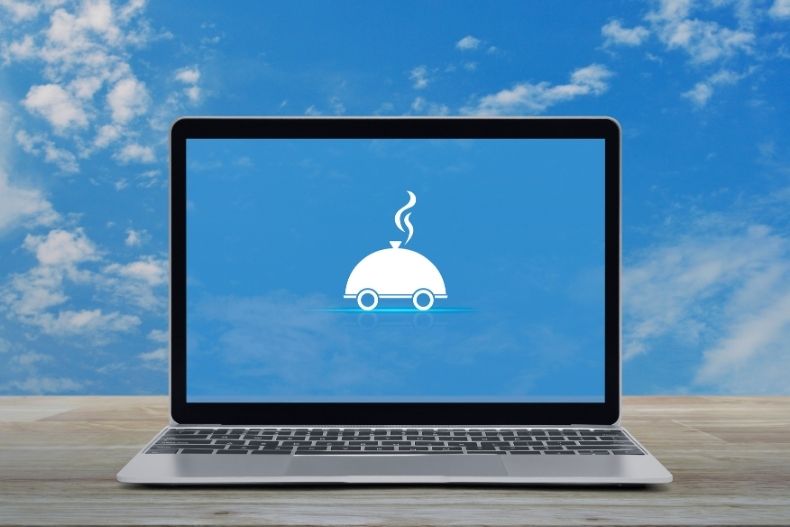Food safety is a critical part of the food service business. While onsite food storage in customer-facing establishments like retail stores and restaurants receives a lot of attention, the quality of the food storage conditions all along the supply chain is equally important.
Food safety begins right from the source of the food, all the way to the restaurant table. As with all chains, the supply chain’s ability to deliver safe food is only as strong as its weakest link.
Supply chain logistics in the food industry depend on precise refrigeration, and “cold chain” monitoring systems are therefore pivotal. The cold chain is, in essence, the logistics infrastructure that keeps food fresh until its “last mile” delivery. Cold chain analytics systems have been around for a while, but recent developments in monitoring tech, the internet of things and the cloud, together with higher levels of demand for quality assurance, have made them far more effective.
Here are five advances in cold chain monitoring that have impacted the food industry in positive ways.

Continuous Data Recording
To ensure food safety, logistics companies need to record all kinds of data. Temperatures, light, tilt, shocks, and humidity are some of the primary conditions that require tracking. Traditionally, logistics companies would inspect shipments at waypoints and transmit data back to control centers using specially designed transmitters.
The problem with this approach was that firms were slow to react to changes in product quality. If goods spoiled in-between waypoints, there was no way to react to it until the shipment reached a designated spot. Continuous data recording has been a boon to food safety monitoring. These days, teams are alerted if conditions exceed certain thresholds. For example, monitoring teams can get in touch with the driver of a truck if shock sensors register unacceptable changes.
Real-time monitoring reduces losses due to spoiled food and increases the safety of products being transported due to it being rigorously monitored for quality before reaching a customer.
Data Variety
One of the truly remarkable aspects of modern cold chain monitoring systems is the sheer variety of data that is tracked. Factors such as humidity, light, and shock affect the goods themselves, and these are tracked in real time. However, conditions that affect the transport of goods are also tracked.
Logistics firms track weather patterns, traffic, and even geopolitical conditions. Through the use of AI, firms can choose between transportation options and take far more than just the relative distance covered into account.
Managers can input relevant data into a system, model transportation times, and add or subtract filters to plan trips.
Powerful Analytics
Limitations in supply chain monitoring led to the food industry adopting a “good enough” approach to safety. Since advanced monitoring and analytics weren’t available to firms, they had no choice but to resort to these standards to minimize losses in transit. These days, “good enough” doesn’t cut it, primarily because consumers are well-educated about where their food comes from.
Logistics firms have risen to the challenge by incorporating analytics into their condition-monitoring systems. These analytics packages vary in strength, with some even using AI to predict possible damage. Firms can dive into condition monitoring data to figure out weaknesses in the supply chain.
For example, analytics teams can uncover both the trend and the possible causes of damage to food in transit. Certain times of the year might result in greater damage. Analytics helps uncover these trends. Machine learning platforms can monitor traffic reports, weather data, and cross-border regulatory changes that might result in possible damage. Not only is data gathered, but it’s also put to optimal use to increase efficiency.
Accuracy
A common problem in supply chains of old was data accuracy. Data loggers with transmitter tags would be mounted to the surface of containers, and these tags were scanned to transmit data. The problem was that these tags were fragile and expensive. They weren’t well equipped to deal with the rough conditions of international shipping.
Another problem that logistics firms had to deal with was losing shipments in yards and storage facilities. The devices used to scan tags depended on radio waves. In dense areas, these waves would get knocked about, and employees would have to manually find the misplaced containers and goods.
Sturdier tags and alternative data transmission methods, such as QR codes, have almost eliminated both issues. Control centers receive data seamlessly, and manual intervention is minimal. Errors in the process are eliminated, and food in transit is in optimal condition at all times.
Better Data Storage
Analytics and real-time monitoring are great, but they aren’t of much use without proper data storage. As data tracking has become more sophisticated, storage solutions have as well.
Cloud storage is standard in the industry, and infrastructure as a service model means that data storage is virtually unlimited.
As a result, logistics firms gather a variety of data without having to worry about upgrading their systems or running out of server space. Larger datasets lend themselves well to deep analysis, and this ensures food safety throughout the supply chain.
Better Monitoring And Lower Costs
As data collection and monitoring have exploded in the food industry, costs have been reduced. Losses in transit are minimized, and real-time monitoring provides a greater understanding of the factors that create losses. With the bottom lines of food service logistics companies increasing, consumers can rest assured that the food they consume is of the best quality.











